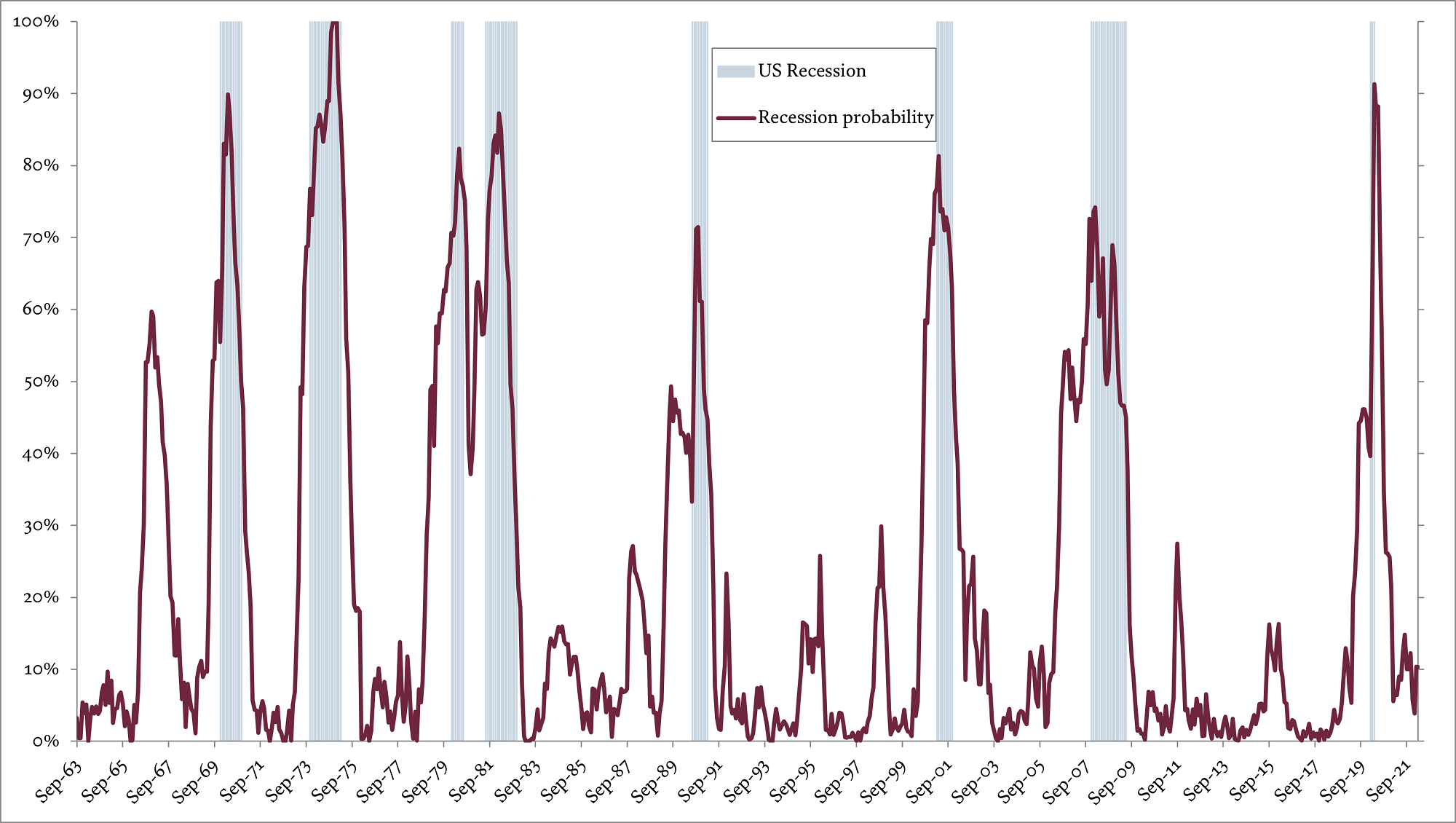
Stagflation in context: Why a major recession remains unlikely
We provide an explanation of stagflation, highlight the regions that could be vulnerable to it and explain why a major recession today remains unlikely
5 min read
Become a client
When you become a client of Coutts, you will be part of an exclusive networkWhat is stagflation?
An economy experiences ‘stagflation’ when growth is stagnant and inflation is high. It’s an unwanted situation because money is losing value while investments into assets such as shares in companies aren’t making returns because there is such low, or even negative, economic growth.
Stagflation became financially synonymous with the difficulties the UK and other economies faced in the 1970s. The oil producing organisation OPEC embargoed oil exports to many western nations, pushing up oil and energy prices dramatically. The rise in the cost of living, fuelled in part by wage price spirals, coincided with stagnant economic growth, and unemployment was high while things got more expensive. This resulted in stagflation.
Although we currently have an energy shock, especially in Europe, as a result of the Russian invasion of Ukraine, the main driver of today’s inflation pressures was the pandemic. It led to a large demand for goods when strained and locked-down supply chains couldn’t cope.
An economy experiences ‘stagflation’ when growth is stagnant and inflation is high. It’s an unwanted situation because money is losing value while investments into assets such as shares in companies aren’t making returns because there is such low, or even negative, economic growth.
Stagflation became financially synonymous with the difficulties the UK and other economies faced in the 1970s. The oil producing organisation OPEC embargoed oil exports to many western nations, pushing up oil and energy prices dramatically. The rise in the cost of living, fuelled in part by wage price spirals, coincided with stagnant economic growth, and unemployment was high while things got more expensive. This resulted in stagflation.
Although we currently have an energy shock, especially in Europe, as a result of the Russian invasion of Ukraine, the main driver of today’s inflation pressures was the pandemic. It led to a large demand for goods when strained and locked-down supply chains couldn’t cope.
EUROPE VULNERABLE TO STAGFLATION, OTHER REGIONS LESS SO
The biggest economic consequence of Russia’s invasion of Ukraine is a negative supply shock for commodities. Both countries have only a small impact on manufacturing and services globally but they are important producers in many commodity markets. This comes at a difficult time for the global economy.
The implications of the invasion are continued inflation pressures that will squeeze household incomes. This will be a bigger problem for Europe than for the US – finding a natural gas supplier that is not Russia is largely a European problem.
Therefore, the Euro Area does looks to be close to a stagflationary environment this year.
US economic growth, on the other hand, should continue to be relatively robust. The ongoing service recovery, corporate investment spending, wage growth, larger wealth effects in housing and stocks, and the end of supply constraints should support the country’s economy. And US inflation is also projected to fall sooner than in Europe and the UK.
In the UK the forecast is for stable full-year GDP growth despite the occasional weak month like February. A very tight labour market and excess savings from the pandemic are notable differences to prior economic slowdowns. Inflation is projected to remain elevated until the October one-off utility price rise, and then slow into 2023.
In summary, we see the Euro Area as the most vulnerable to stagnant growth and high inflation.

Coutts recession probability model. Source: Coutts
US RECESSION RISK CURRENTLY LOW
We have seen talk of recession increasing recently. Partly because of inflation pressures. Investors have also spoken about an ‘inversion of the bond yield curve’, meaning long-term bond yields are lower than short-term bond yields.
Historically, a US yield curve inversion has been a reliable indicator of recession, so it is not a signal we want to ignore. The lead time between curve inversion and recession varies however and can be as long as two years.
Looking at economic trends, the most worrying indicator is the surge in inflation. Historically, inflation rises of this size have caused a recession in the US and other regions. However, this inflation shock is largely due to high demand at a time when supply chains could not cope. In the end, higher inflation dampens demand which eventually lowers prices. Though this dynamic still seems more than a year away.
Our US recession model above combines the yield curve signal with other macro indicators to cast a wider net than solely the bond market. The aggregate US recession risk is still low currently, and against this backdrop, we maintain a modest tilt toward assets that do carry some risk (and growth potential) such as equities in our portfolios and funds.
But the grounds of a possible, though not probable, recession could appear. Very high home prices, rising interest rates and tighter monetary policy (stimulus) create a challenging economic mix. Ironically, central banks themselves could accelerate the path to recession by raising rates and setting guidance too aggressively, and thereby slowing the economy abruptly. This is something we continue to watch closely.
WHAT ARE THE IMPLICATIONS FOR INVESTORS?
While the probability of a major recession still looks low this year, equity markets are not cheap even after the market correction we saw in Q1. It is not the first time markets have been through this type of cycle and it is important to keep a longer-term perspective amid shorter-term fears.
Despite the recent rise in bond yields, they remain low by historical comparison and periods of low bond yields have historically seen good equity returns.
what is coutts doing?
- Diversification. Especially in times when economic narratives are shifting frequently diversification is strategically key in our portfolio construction.
- Quality & defensive equities. We hold equites in quality companies (balance sheet strength, earnings stream) which are better positioned to hold and defend value throughout the specific macroeconomic and geopolitical risks we are currently seeing. As well as this, our sterling portfolios have a heavy weighting in UK equities, which contain a combination of commodity and defensive sectors like health care.
- Underweight bond positions & fixed income diversification. Given the inflation pressures and aggressive central bank rhetoric, we hold a slight underweight in bonds and a larger one in investment grade credit. We have also diversified our fixed income assets. We hold Chinese bonds – China needs to stimulate its economy so these could provide a higher yield – and we hold short-duration bonds in high yield and emerging market debt, as well as financial credit.
The value of investments, and the income from them, can fall as well as rise and you may not get back what you put in. Past performance should not be taken as a guide to future performance. You should continue to hold cash for your short term goals






